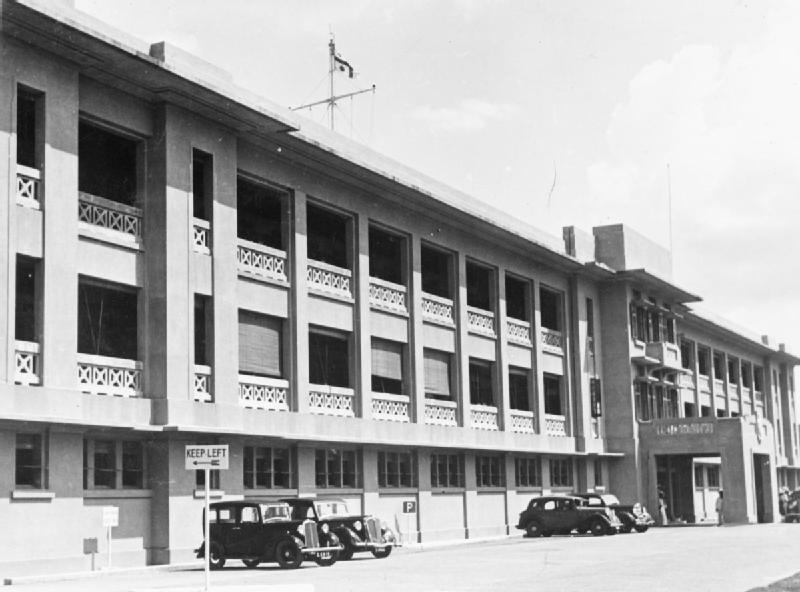China Station on:
[Wikipedia]
[Google]
[Amazon]
The Commander-in-Chief, China was the admiral in command of what was usually known as the China Station, at once both a British
/ref> The China Station, established in 1865, had as its area of responsibility the coasts of China and its navigable rivers, the western part of the The formation had bases at
The formation had bases at
Royal Navy
The Royal Navy (RN) is the United Kingdom's naval warfare force. Although warships were used by Kingdom of England, English and Kingdom of Scotland, Scottish kings from the early medieval period, the first major maritime engagements were foug ...
naval formation and its admiral in command. It was created in 1865 and deactivated in 1941.
From 1831 to 1865, the East Indies Station
The East Indies Station was a formation and command of the British Royal Navy. Created in 1744 by the Admiralty, it was under the command of the Commander-in-Chief, East Indies.
Even in official documents, the term ''East Indies Station'' was ...
and the China Station were a single command known as the East Indies and China Station.William Loney RN/ref> The China Station, established in 1865, had as its area of responsibility the coasts of China and its navigable rivers, the western part of the
Pacific Ocean
The Pacific Ocean is the largest and deepest of Earth's five oceanic divisions. It extends from the Arctic Ocean in the north to the Southern Ocean (or, depending on definition, to Antarctica) in the south, and is bounded by the contine ...
, and the waters around the Dutch East Indies. The navy often co-operated with British commercial interests in this area.
 The formation had bases at
The formation had bases at Singapore
Singapore (), officially the Republic of Singapore, is a sovereign island country and city-state in maritime Southeast Asia. It lies about one degree of latitude () north of the equator, off the southern tip of the Malay Peninsula, borde ...
( Singapore Naval Base), HMS ''Tamar'' (1865–1941 and 1945–1997) in Hong Kong
Hong Kong ( (US) or (UK); , ), officially the Hong Kong Special Administrative Region of the People's Republic of China (abbr. Hong Kong SAR or HKSAR), is a city and special administrative region of China on the eastern Pearl River Delta i ...
and Wei Hai (at Liugong Island) (1898–1940). The China Station complement usually consisted of several older light cruisers and destroyers, and the Chinese rivers were patrolled by a flotilla of suitable, shallow-draught gunboat
A gunboat is a naval watercraft designed for the express purpose of carrying one or more guns to bombard coastal targets, as opposed to those military craft designed for naval warfare, or for ferrying troops or supplies.
History Pre-ste ...
s, referred to as "China gunboats". Ships on this station usually had a distinctive livery of white hull and superstructure and dark funnels.
Between the two world wars, the Insect class gunboats were mainly used in the Far East
The ''Far East'' was a European term to refer to the geographical regions that includes East and Southeast Asia as well as the Russian Far East to a lesser extent. South Asia is sometimes also included for economic and cultural reasons.
The te ...
and they were present during the Japanese invasion of China. In 1937, on the Yangtze
The Yangtze or Yangzi ( or ; ) is the longest river in Asia, the third-longest in the world, and the longest in the world to flow entirely within one country. It rises at Jari Hill in the Tanggula Mountains (Tibetan Plateau) and flow ...
river, the Japanese attacked , firing on her from a shore battery. A U.S. gunboat, was also attacked, by Japanese aircraft, and sunk. ''Ladybird'' sailed the 20 miles to the scene of the sinking, took on board some of the ''Panay'' survivors and took them to Shanghai
Shanghai (; , , Standard Mandarin pronunciation: ) is one of the four direct-administered municipalities of the People's Republic of China (PRC). The city is located on the southern estuary of the Yangtze River, with the Huangpu River flowin ...
. ''Scarab'' and ''Cricket'' were off Nanking in 1937 as the Japanese started to bomb the city.
In response to increased Japanese threats, the separate China Station was merged with the East Indies Station
The East Indies Station was a formation and command of the British Royal Navy. Created in 1744 by the Admiralty, it was under the command of the Commander-in-Chief, East Indies.
Even in official documents, the term ''East Indies Station'' was ...
in December 1941 to form the Eastern Fleet.
Commanders-in-Chief, China
See also
* List of Eastern Fleet ships *List of fleets and major commands of the Royal Navy
The professional head of the Royal Navy is known as the First Sea Lord and Chief of the Naval Staff (1SL/CNS).
There are presently two senior subordinates to the 1SL: the Second Sea Lord, who is also the Deputy Chief of the Naval Staff; and ...
References
{{Royal Navy fleets Commanders-in-chief of the Royal Navy Military units and formations of the Royal Navy in World War I Military units and formations of the Royal Navy in World War II Military units and formations disestablished in 1941